FLASHBACK TO 2004: “The vision for the waterbucket.ca website is to provide a resource rich ‘destination location’ for water sustainability in British Columbia,” stated Mike Tanner, Waterbucket Chair, at the Penticton Drought Forum hosted by the Province of British Columbia (July 2004)
Comments Off on FLASHBACK TO 2004: “The vision for the waterbucket.ca website is to provide a resource rich ‘destination location’ for water sustainability in British Columbia,” stated Mike Tanner, Waterbucket Chair, at the Penticton Drought Forum hosted by the Province of British Columbia (July 2004)Note to Reader:
In 2003, British Columbia experienced one “teachable moment” after another, highlighted by the Okanagan forest fires that resulted in mass evacuations and widespread destruction in the City of Kelowna and surrounding areas. The impact of this “teachable year” was to set in motion a series of outcomes that have rippled through time. First came the Water Sustainability Action Plan, released in February 2004. Then came release of British Columbia’s Drought Response Plan in June 2004. This was followed by the Provincial Drought Forum held in July 2004 in Penticton.
Water Sustainability Action Plan
In July 2004, the Province hosted a Water Use and Conservation Forum in Penticton. This was quickly branded as the “Penticton Drought Forum”. The program was co-hosted by two provincial Ministries and organized by Land and Water British Columbia Inc (LWBC). To download the Agenda, click here.
The Forum commenced the rollout of the Water Sustainability Action Plan, released in February 2004. The Action Plan comprises six elements that holistically link water management with land use, development and resource production. The Waterbucket Website is an Action Plan element and is being developed by an inter-agency partnership.
To Learn More:
To download a copy of the Water Sustainabiltiy Action Plan for British Columbia: Framework for Building Partnerships, click here.
Waterbucket Website Partnership
Mike Tanner, representing BC Hydro Power Smart, spoke on behalf of the Waterbucket Website Partnership when he participated in one of the Forum panel sessions. Mike Tanner is Waterbucket Chair. He presented the website vision. The next panel session provided a platform for Gary Paget, representing the Ministrty of Community, Aboriginal and Women’s Services, to announce that his Ministry was giving the Partnership a $25,000 grant towards website development
Integrated Water Management
“Integrated water management involves consideration of land, water, air and living organisms – including humans – as well as the interactions among them. Through partnerships, the Water Sustainability Action Plan is promoting the watershed as a fundamental planning unit,” stated Mike Tanner. “The vision for the waterbucket.ca website is to provide a resource rich, highly interactive ‘destination location’ website for information and communication related to water sustainability in the Province of BC.”
 “The waterbucket.ca will connect all six Action Plan Elements to provide the complete story on integrated water management – why, what, where and how – and is the key to the communication strategy for the Action Plan.”
“The waterbucket.ca will connect all six Action Plan Elements to provide the complete story on integrated water management – why, what, where and how – and is the key to the communication strategy for the Action Plan.”
“The Action Plan recognizes that partnerships hold the key to building broad-based support for improving water management practices, and for integration of water management with land use.”
To Learn More:
Download a copy of the Water Sustainability Action Plan for British Columbia
Universal Access to Information
“In November 2003, the Province and the Action Plan partners conducted a working session in Kelowna with a ‘provincial focus group’ to identify the information needs of stakeholders. The focus group determined that there are at least two barriers to providing universal access to information and to furthering sustainable water resource management,” stated Mike Tanner.
“The first is related to finding, retrieving and/or sharing appropriate resources useful for promoting learning and change. Although resources exist (information, tools, people, funding), they are located on numerous websites and are not linked to one portal.. There are those who are willing or eager to share resources but there are limited effective vehicles to get these resources to people who might benefit from them.”
“The second and related barrier is concerned with communication and/or integration across initiatives, regions, sectors and disciplines and linking these in order to further collective understanding, collaboration and the development and implementation of best practice.”
“Implementation of the waterbucket.ca project will help overcome these perceived barriers. The website will be developed primarily for elected officials, government agencies, water utilities, water suppliers and managers, but will be of interest to all water users – domestic, industrial, commercial and agricultural. The site will include elements that are representative of features of a geophysical community,” concluded Mike Tanner.



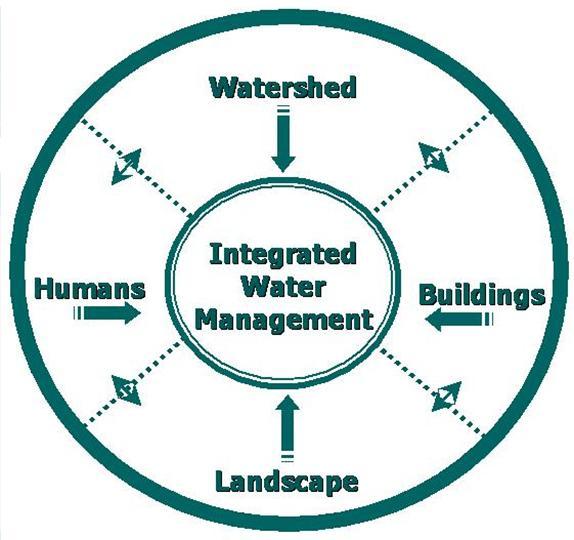

 “Consider our recent experience. For five straight years, from 2015 through 2019, British Columbia repeatedly dodged a bullet due to the new reality of longer, drier summers. 2020 was different. It was a wet year. This is why we must not be lulled as we emerge from winter and look ahead to summer.”
“Consider our recent experience. For five straight years, from 2015 through 2019, British Columbia repeatedly dodged a bullet due to the new reality of longer, drier summers. 2020 was different. It was a wet year. This is why we must not be lulled as we emerge from winter and look ahead to summer.”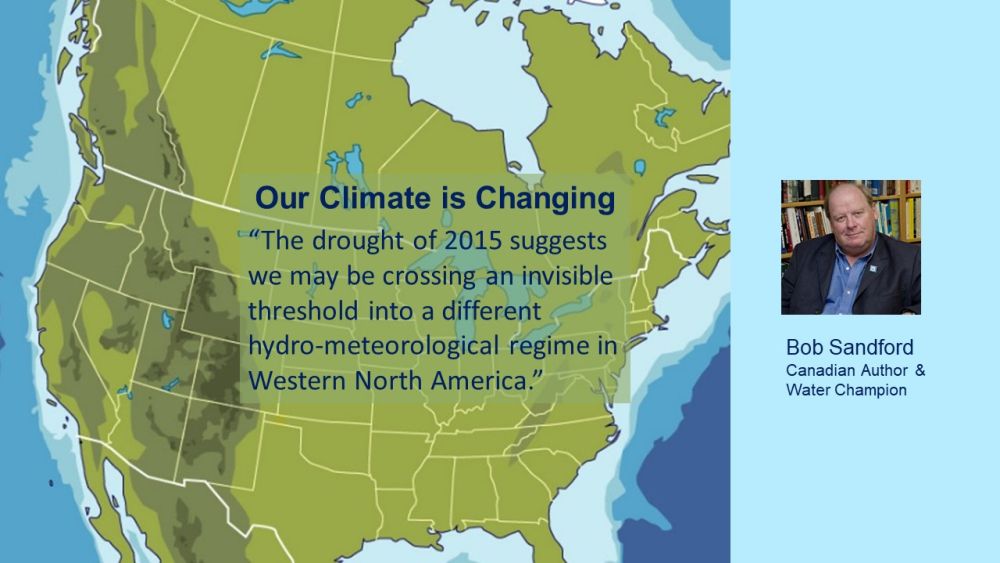

 “Desired outcomes in going to a 6-level system include better understanding of current conditions, advance warning of extreme drought, and better alignment with other jurisdictions in North America. The Province intends to run a trial of the enhanced drought levels over summer 2021.”
“Desired outcomes in going to a 6-level system include better understanding of current conditions, advance warning of extreme drought, and better alignment with other jurisdictions in North America. The Province intends to run a trial of the enhanced drought levels over summer 2021.”





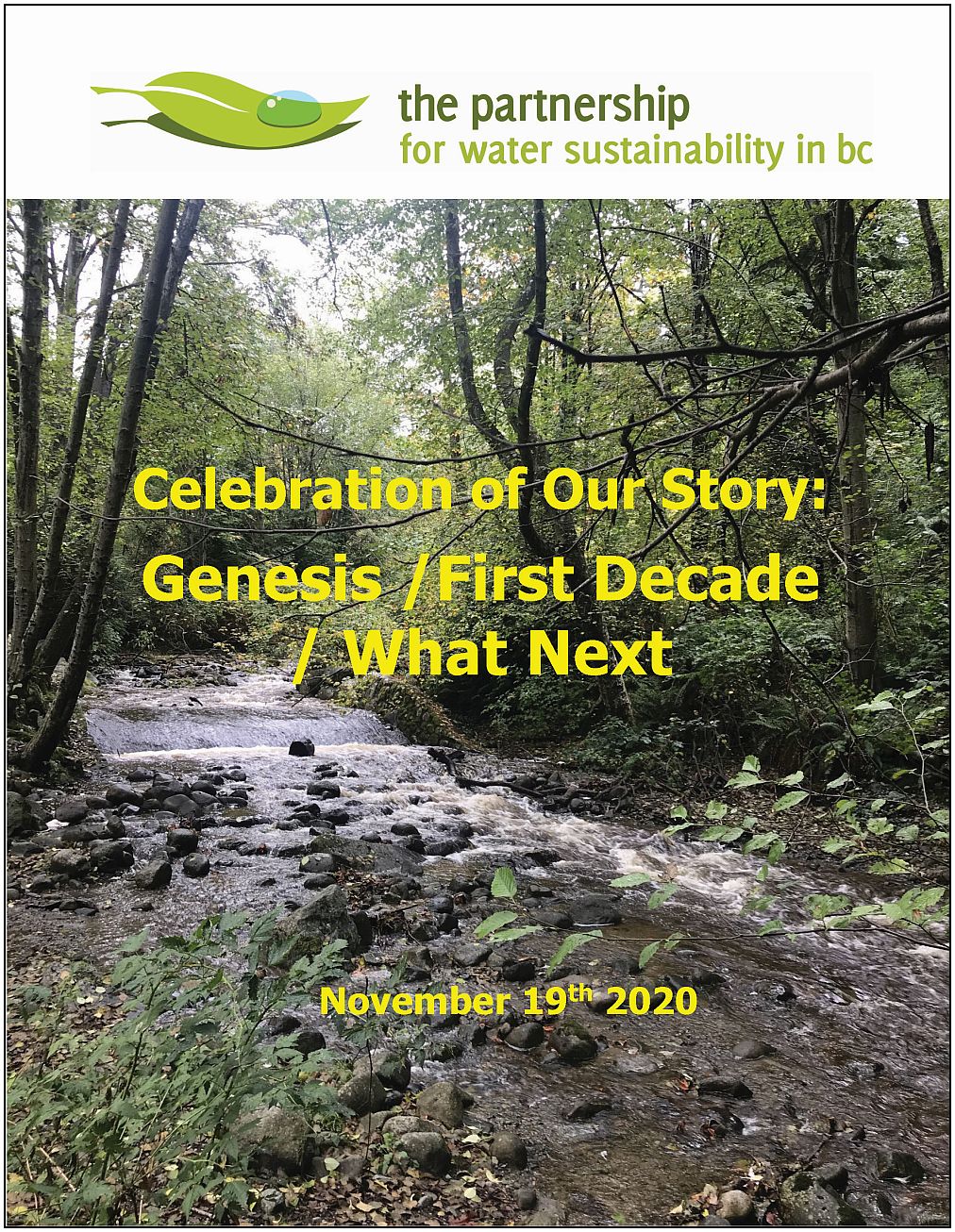

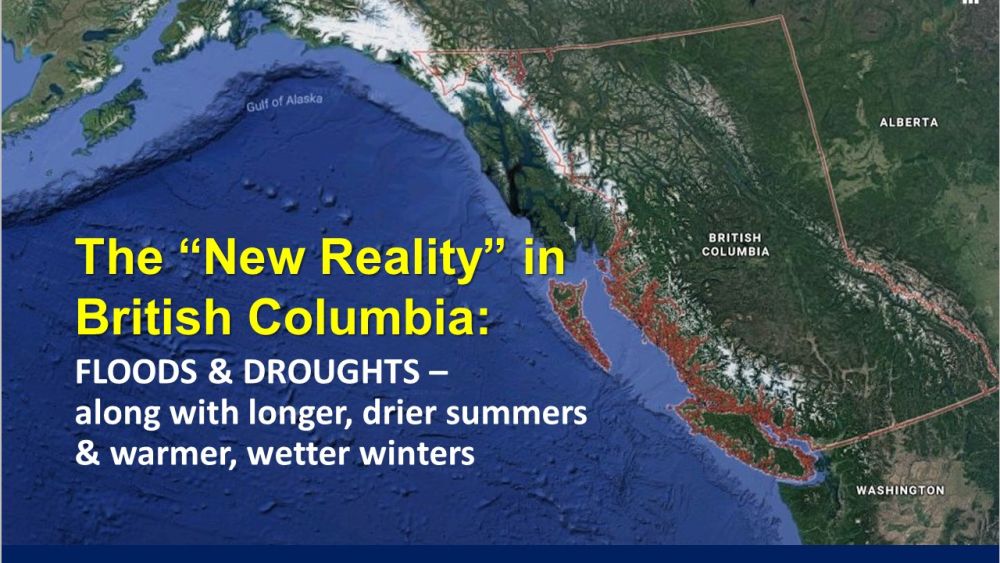






 “Consider our recent experience. For five straight years, from 2015 through 2019, British Columbia repeatedly dodged a bullet due to the new reality of longer, drier summers. 2020 was different. It was a wet year. This is why we must not be lulled as we emerge from winter and look ahead to summer.”
“Consider our recent experience. For five straight years, from 2015 through 2019, British Columbia repeatedly dodged a bullet due to the new reality of longer, drier summers. 2020 was different. It was a wet year. This is why we must not be lulled as we emerge from winter and look ahead to summer.”
 “Conventional water supply planning is typically based on a narrow understanding of engineering statistics without really understanding the role that climate variability plays. A core message is that the OUT = IN equation is variable on both sides. Something to think about is that in mathematics one cannot solve for two variables with a single equation. In other words, it is time for practitioners to go back to the basics and re-think how we approach water supply analysis and planning,” noted Robert Hicks in his workshop presentation.
“Conventional water supply planning is typically based on a narrow understanding of engineering statistics without really understanding the role that climate variability plays. A core message is that the OUT = IN equation is variable on both sides. Something to think about is that in mathematics one cannot solve for two variables with a single equation. In other words, it is time for practitioners to go back to the basics and re-think how we approach water supply analysis and planning,” noted Robert Hicks in his workshop presentation.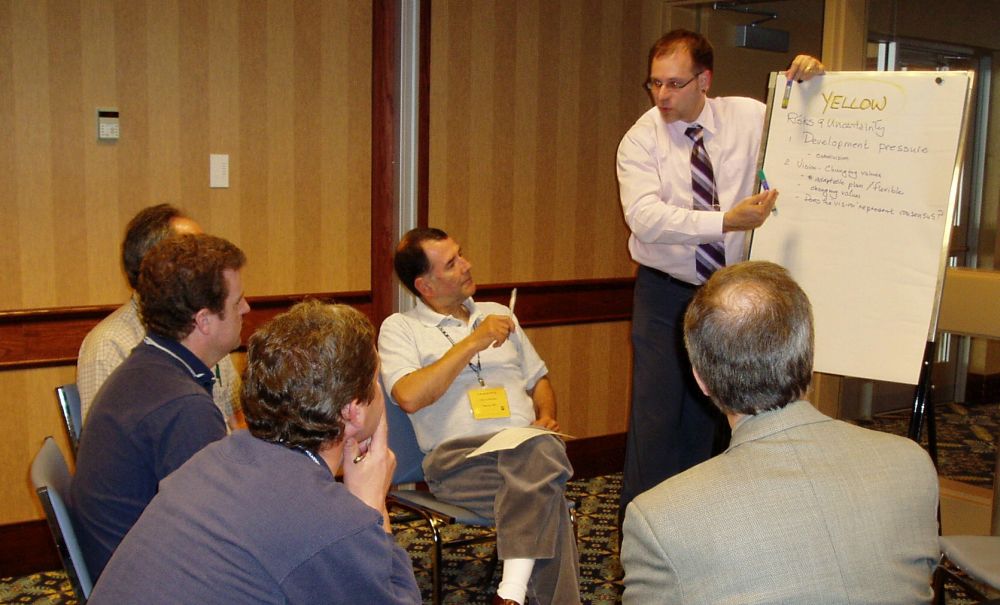
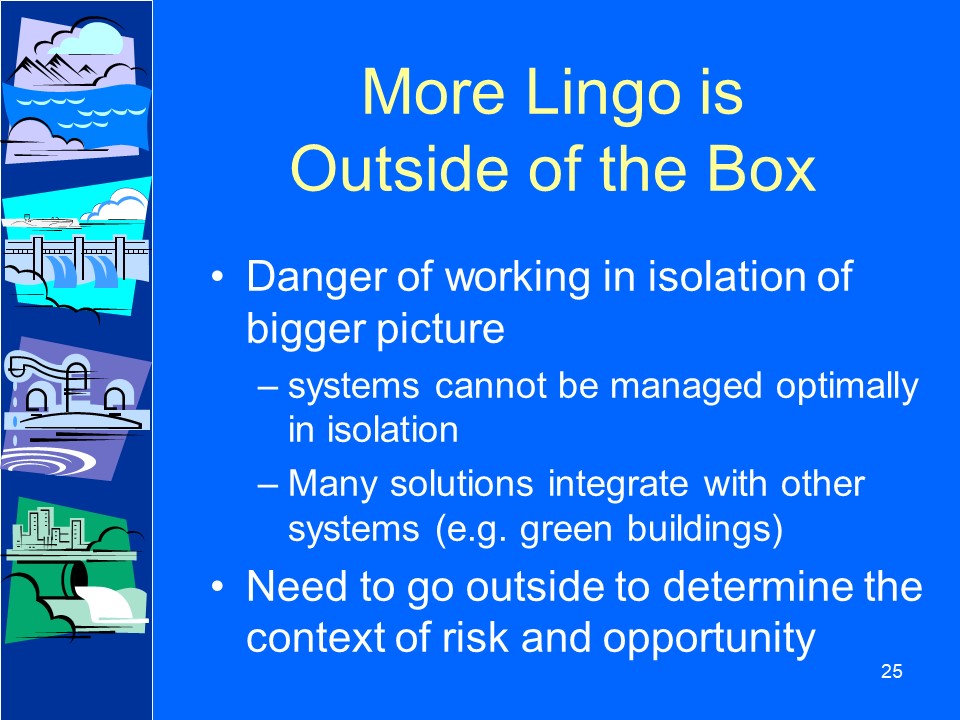
 “The workshop was an important first step in changing the way practitioners approach water supply planning. We introduced a number of key concepts that we intend to build upon:
“The workshop was an important first step in changing the way practitioners approach water supply planning. We introduced a number of key concepts that we intend to build upon: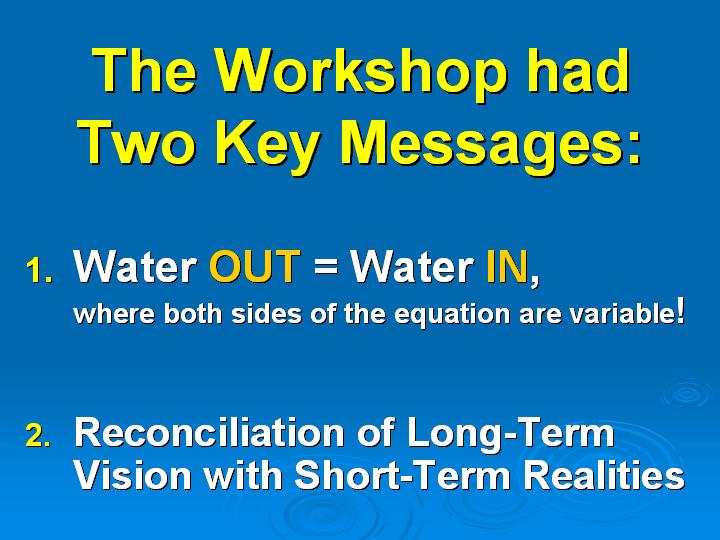
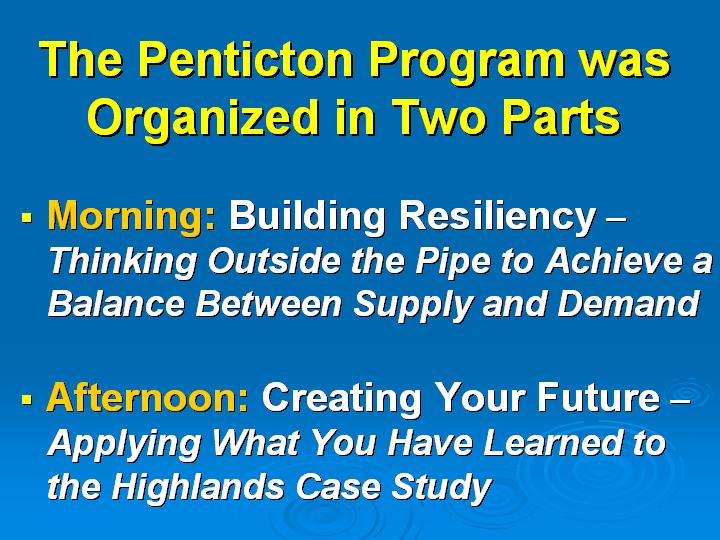
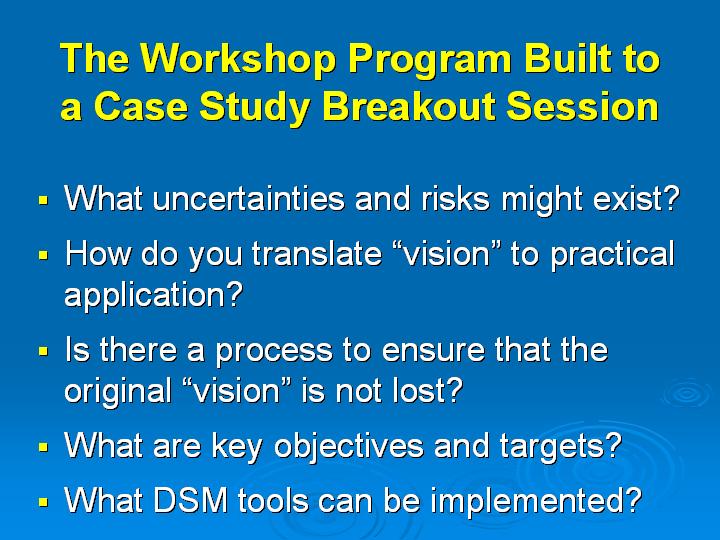



 “The 45 actions and targets in
“The 45 actions and targets in 
 “The Ministry’s application of the Water Conservation Condition as a contract requirement for infrastructure grants exemplifies our pragmatic, multi-year approach to incentivize changes in practice. This contract requirement points to the web-based
“The Ministry’s application of the Water Conservation Condition as a contract requirement for infrastructure grants exemplifies our pragmatic, multi-year approach to incentivize changes in practice. This contract requirement points to the web-based 
 Linked to Provincial Database
Linked to Provincial Database
 According to Glen Pleasance, Technical Program Chair, “The Conference provided a unique national perspective on water efficiency and conservation programs, issues and initiatives – focussing on all aspects of municipal efficiency programs from technology, to best management practices, to policy and education programs. Normally these issues are addressed piecemeal, or on a regional basis – this event provided a national Canadian perspective.”
According to Glen Pleasance, Technical Program Chair, “The Conference provided a unique national perspective on water efficiency and conservation programs, issues and initiatives – focussing on all aspects of municipal efficiency programs from technology, to best management practices, to policy and education programs. Normally these issues are addressed piecemeal, or on a regional basis – this event provided a national Canadian perspective.” Complementary to the CWWA National Conference, and to support the Ministry, the University of Victoria’s POLIS Project on Ecological Governance hosted a Water Conservation Planning Workshop. Led by Oliver Brandes, it was targeted at municipal staff directly involved in the development of water plans, such as water managers and staff, sustainability coordinators, engineers, ecologists, consultants, watershed advisors and citizen representatives.
Complementary to the CWWA National Conference, and to support the Ministry, the University of Victoria’s POLIS Project on Ecological Governance hosted a Water Conservation Planning Workshop. Led by Oliver Brandes, it was targeted at municipal staff directly involved in the development of water plans, such as water managers and staff, sustainability coordinators, engineers, ecologists, consultants, watershed advisors and citizen representatives. 
 “The freeware Water Conservation Calculator is an on-line user-friendly tool geared for water purveyors of smaller communities. Smaller communities often cannot allocate resources to traditional infrastructure projects or cannot budget for the development of water conservation and efficiency plans by service providers.”
“The freeware Water Conservation Calculator is an on-line user-friendly tool geared for water purveyors of smaller communities. Smaller communities often cannot allocate resources to traditional infrastructure projects or cannot budget for the development of water conservation and efficiency plans by service providers.” “A properly designed conservation program has the ability to extend the life of infrastructure, reduce repair, treatment and power costs, reduce power expenses, and defer or eliminate the need for major capital costs. Use of the Water Conservation Calculator may become a Ministry requirement as part of the infrastructure grant application process,” foreshadowed Liam Edwards in October 2009. At the time, he was A/Director, Infrastructure and Engineering.
“A properly designed conservation program has the ability to extend the life of infrastructure, reduce repair, treatment and power costs, reduce power expenses, and defer or eliminate the need for major capital costs. Use of the Water Conservation Calculator may become a Ministry requirement as part of the infrastructure grant application process,” foreshadowed Liam Edwards in October 2009. At the time, he was A/Director, Infrastructure and Engineering. In 2020, Brian Bedford provided this perspective, “Over time, the process has been one of incrementally raising the bar in defined steps – awareness first, then education, and finally, full implementation. In the case of Water Conservation Plans, it went from being questions to becoming an optional document, to being a conditional requirement on approved contracts.” Brian Bedford is currently the A/Executive Director, Local Government Infrastructure & Finance, Ministry of Municipal Affairs and Housing.
In 2020, Brian Bedford provided this perspective, “Over time, the process has been one of incrementally raising the bar in defined steps – awareness first, then education, and finally, full implementation. In the case of Water Conservation Plans, it went from being questions to becoming an optional document, to being a conditional requirement on approved contracts.” Brian Bedford is currently the A/Executive Director, Local Government Infrastructure & Finance, Ministry of Municipal Affairs and Housing.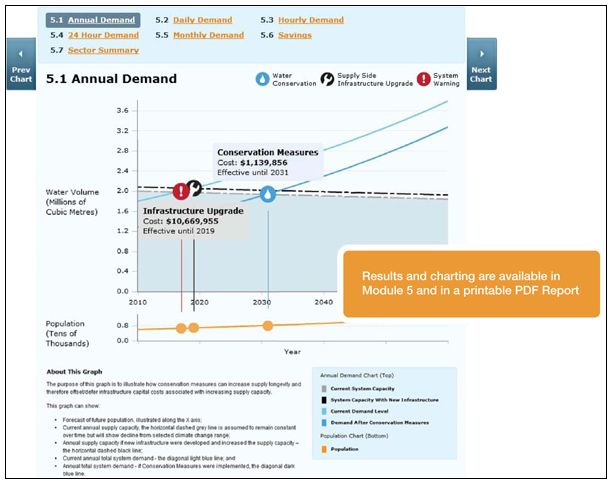
 collecting and recording community water system data;
collecting and recording community water system data;

 “The Partnership for Water Sustainability develops tools and resources for use by communities to facilitate a ‘design with nature’ approach to water-centric planning in British Columbia. The newest tool in the Partnership toolbox is the BC Landscape Water Calculator. Simply put, it is both a decision support and educational tool for local government water conservation programs.
“The Partnership for Water Sustainability develops tools and resources for use by communities to facilitate a ‘design with nature’ approach to water-centric planning in British Columbia. The newest tool in the Partnership toolbox is the BC Landscape Water Calculator. Simply put, it is both a decision support and educational tool for local government water conservation programs. landscape look fantastic. Win-win for everyone!
landscape look fantastic. Win-win for everyone!

 When he retired from government in 2014, Ted van der Gulik was the Senior Engineer in the BC Ministry of Agriculture. He had a leadership role in provincial initiatives related to water use and management.
When he retired from government in 2014, Ted van der Gulik was the Senior Engineer in the BC Ministry of Agriculture. He had a leadership role in provincial initiatives related to water use and management.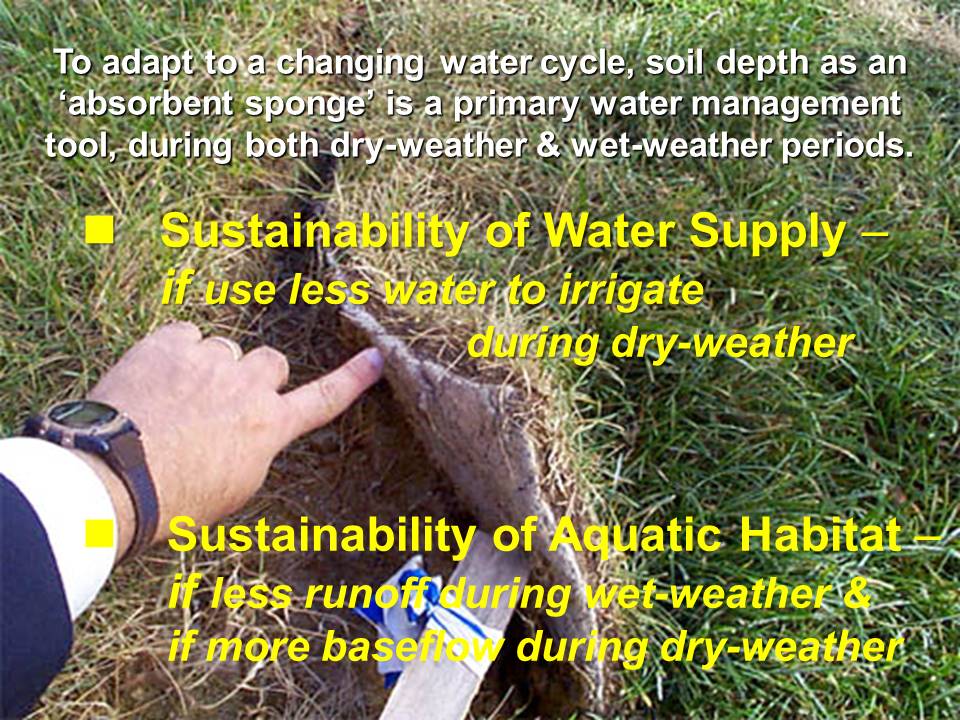

 The following article on rainwater harvesting was contributed by Donald Kim, content specialist of
The following article on rainwater harvesting was contributed by Donald Kim, content specialist of 
 The BC Building Code enables innovation. Designers can propose Alternative Solutions to the Building Code. Coupled with this enabling opportunity, however, is a duty for designers to demonstrate how they are being responsible in applying an understanding of Building Science,” explained Zachary May at
The BC Building Code enables innovation. Designers can propose Alternative Solutions to the Building Code. Coupled with this enabling opportunity, however, is a duty for designers to demonstrate how they are being responsible in applying an understanding of Building Science,” explained Zachary May at 
 This article is republished from
This article is republished from 
